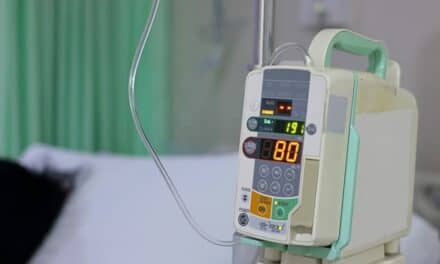A new AAMI technical information report (TIR) aims to help product designers and developers apply a more robust testing regime to infusion devices—and, ultimately, improve device, medication, and patient safety. AAMI TIR101:2021,Fluid delivery performance testing for infusion pumps, provides guidance on:
- Expanded test conditions across the full spectrum of clinical use
- Performance measurements translated into clinically relevant metrics
- Standardized testing and disclosure
With few exceptions, infusion devices have not fundamentally changed over the past decade or more. But infusion practices have “markedly increased in complexity and sophistication of clinical usage,” according to the TIR’s authors. This can result in clinician uncertainty about how these devices will perform across a broad range of conditions that have not been tested.
The international standard that addresses performance testing is IEC 60601-2-24:2012, Medical electrical equipment—Part 2-24: Particular requirements for the basic safety and essential performance of infusion pumps and controllers. The standard is “already pretty old,” says Ben Powers, vice president of infusion systems at Ivenix and cochair of the AAMI Infusion Device Committee, “and a revision appears to be at least four years away.”
Thus, TIR101—which has been in development for more than two years—is the first U.S. guidance to define fluid delivery performance test methods to accurately and efficiently align with the intended use of an infusion pump.
Complicated Use Cases Spur a “Big Innovation in Analysis”
The international standard largely relies on laboratory test conditions to evaluate infusion device performance. Real-world use cases are more complicated. “Medications are getting more and more concentrated, and they have more kinds of clinical uses,” Powers says. “There are more drugs that have immediate effects—where flow accuracy and continuity are very important. There are also a lot of new biologicals that have higher viscosities.”
In addition, more high-alert medications are used in patient care today. High-alert medications “bear a heightened risk of causing significant patient harm when they are used in error,” according to the Institute for Safe Medication Practices.
“Clinicians need to rely on these pumps a lot more than they have in the past,” Powers says. “Flow rate, viscosity, head height, back pressure, and temperature are all external conditions that affect the pump output. Clinicians do not need to understand the science of infusion devices. They do need do know how different clinical conditions affect the output of the pumps. For example, flow accuracy might be 10% or 20% off for a high viscosity drug, depending on the external conditions.”
Not all instructions for use (IFU) disclose how different clinical conditions affect pump output, however. To develop the TIR, the Infusion Device Committee prioritized the most important clinical needs: flow rate accuracy and flow rate variability. To address flow rate accuracy, the committee built a full test matrix that covers all the conditions for long-term flow-rate accuracy, or the average output over time pegged to the target flow rate.
“Everybody should be testing now across the full range of conditions,” Powers says. “This aligns with input from the FDA, which expressed interest in having manufacturers test infusion devices in across a broader range of conditions.”
The committee took a very different approach to address flow rate variability (or short-term accuracy), which Powers characterized as “a big innovation in analysis.” Here’s the backstory: IEC 60601-2-24:2012 captures flow rate variability as visual representations known as “trumpet curves,” showing how flow would vary over a short period of time, such as two to five minutes. “But nobody really understood what they meant,” Powers says.
“Our approach to flow rate variability is based on pharmacokinetics, which is basically how drugs will actually behave in the bloodstream,” Powers adds. He credits AAMI Fellow Bob Butterfield, a thought leader in infusion device testing, with championing this approach. Using their collective knowledge of fluid dynamics and physics, the TIR101 team developed methods to translate measurements of flow rate variability into clinically relevant metrics. Clinicians can use this information to make informed decisions about drug delivery to achieve the tight clinical outcomes they need.
“A lot of the people on the committee have spent a lot of time in labs playing around with this challenge themselves,” Powers says. “It’s a big collaboration of creative ideas from a lot of really talented individuals across the industry.”
The final element of TIR101 is a standardized approach to disclosure about infusion pump performance in IFU, which will enable a more straightforward comparison of products.





